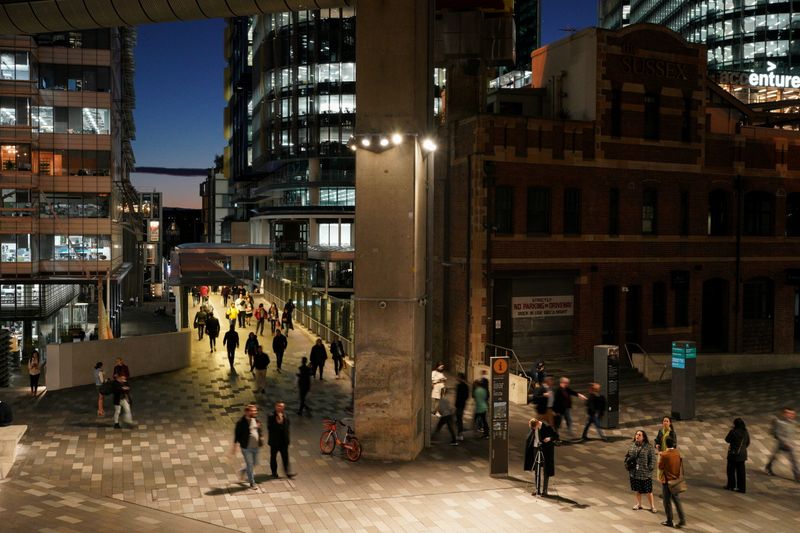By Wayne Cole
SYDNEY (Reuters) - Australian business investment slipped in the third quarter as pandemic lockdowns shut many firms, though future spending plans proved surprisingly resilient and a rapid recovery is expected now that most restrictions have been lifted.
Figures from the Australian Bureau of Statistics out on Thursday showed capital expenditure fell a real 2.2% in the third quarter to A$32.7 billion ($23.57 billion), in line with market forecasts of a 2.0% drop.
Spending plans for the year to end June 2022 were upgraded to A$138.6 billion, above most analysts' estimates and a sign business confidence had weathered the disruptions well.
"It suggests that spending this financial year will be over 10% higher than fiscal 2021, comfortably outstripping the levels seen in the three years prior to the pandemic," said Sarah Hunter, chief economist for BIS Oxford Economics.
"Construction, wholesale trade and transport, postal and warehousing led the way, reflecting the need to expand capacity to properly service the substantial shift to online retailing."
For the third quarter, most of the pullback in investment came in plant and machinery with the retail and education sectors particularly hard hit by the lockdowns.
Data on gross domestic product (GDP) due next week is expected to show a sharp contraction given stay-at-home rules in Sydney and Melbourne hammered consumption during the quarter.
Yet with 86% of the adult population fully vaccinated, most restrictions are gone and spending has quickly ramped up as retailers count on a bumper Black Friday of sales this week.
Separate data on payrolls out on Thursday showed employment jumped sharply in the last two weeks of October, rounding out a strong month for the states of New South Wales and Victoria.
That pick up in jobs has yet to see much acceleration in wages growth which languished at an annual 2.2% in the third quarter, well short of consumer price inflation at 3%.
That is too slow for the Reserve Bank of Australia (RBA), which wants to see wage growth running at 3%-plus before pulling the trigger on rate rises, something it doubts will happen until 2023 at the earliest.
Investors are wagering the bank is behind the curve on inflation and will actually have to hike the 0.1% cash rate by June next year, if only to keep up with other central banks.

The Reserve Bank of New Zealand (RBNZ) on Wednesday lifted its rate for a second month running and flagged further rises to 1.5% by mid-2022.
($1 = 1.3881 Australian dollars)